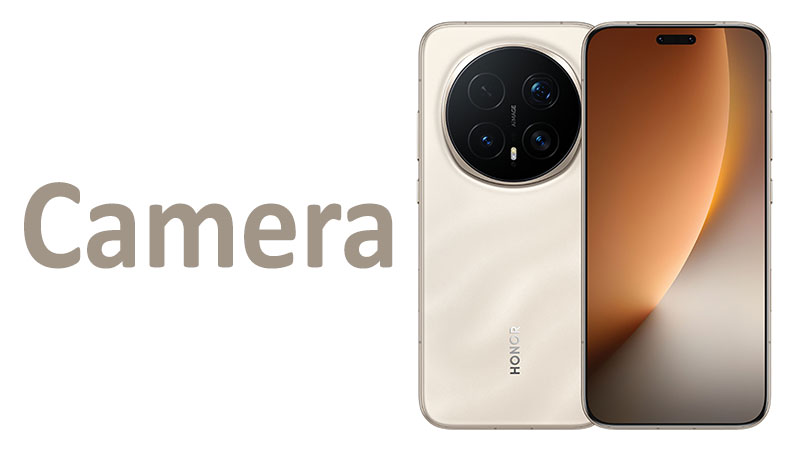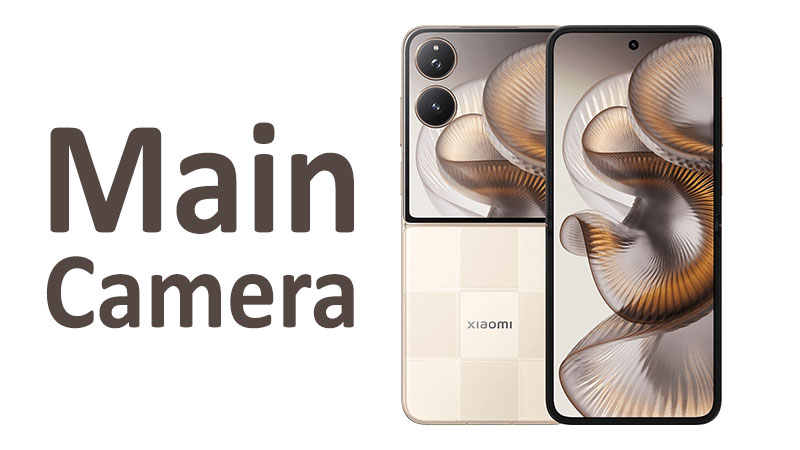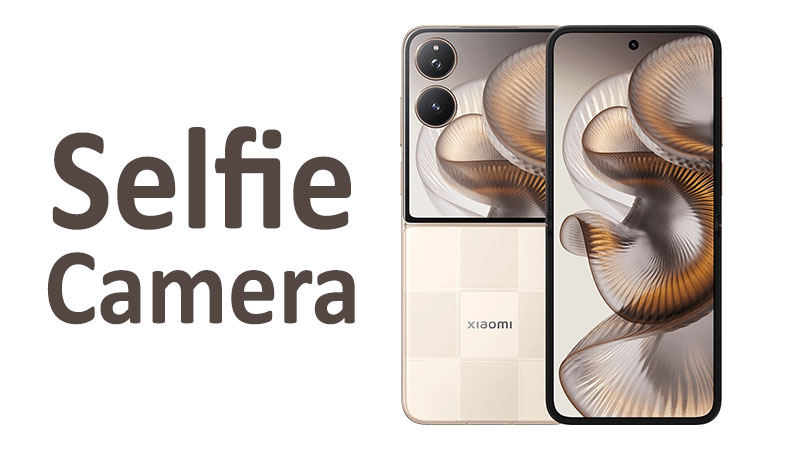The Honor Magic 8 Pro camera system sets a bold new standard for flagship smartphone photography. This comprehensive review explores the precise specifications and real-world performance of Honor’s latest imaging technology. We will break down every lens, sensor, and feature to help you understand its capabilities. The Magic 8 Pro aims to challenge the established leaders in mobile photography. It introduces several innovative hardware elements combined with advanced artificial intelligence processing.
The Foundation of Flagship Photography
The Honor Magic 8 Pro boasts an incredibly powerful triple rear camera array. This setup is designed for maximum versatility across all shooting conditions. Honor has chosen high-resolution sensors for every lens. This approach ensures exceptional detail whether you shoot a distant subject or a sprawling landscape. The main camera system is complemented by a sophisticated selfie camera unit. This front array handles both high-resolution imaging and advanced depth sensing.
The entire system relies on powerful hardware specifications. This includes a large primary sensor and an unprecedented 200 MP telephoto lens. The integration of advanced stabilization and focusing technologies is also crucial. These features elevate the device far beyond typical consumer standards.
Primary Camera: The 50 MP Wide Sensor
The main wide-angle lens is the workhorse of the Honor Magic 8 Pro camera. It utilizes a powerful 50 MP sensor. This sensor is responsible for capturing most everyday photos and videos.
Deep Dive into Wide Sensor Specs
The primary lens features an expansive f/1.6 aperture. This large opening allows significant light collection, which is excellent for all situations. It uses an equivalent 24mm focal length. This is a classic choice for a main smartphone camera, offering a true-to-life perspective.
The sensor itself measures 1/1.3 inches. Individual pixels are generously sized at 1.2 micrometers. This combination of large sensor size and large pixel size enhances light sensitivity greatly. Low-light images benefit significantly from these physical properties. Furthermore, the lens incorporates multi-directional Phase Detection Autofocus (PDAF). This ensures extremely fast and accurate focus locking. Optical Image Stabilization (OIS) is also built into this sensor. OIS mechanically compensates for hand shake, keeping shots crisp.
Daylight and Performance Analysis
In bright daylight, the 50 MP wide sensor delivers stunningly detailed images. Colors are rich and vibrant, often leaning toward a punchier look. The high megapixel count, usually binned down, provides superb clarity. Users notice fine textures and minimal artifacts.
The large f/1.6 aperture creates a naturally shallow depth of field. This allows for attractive background blur, or bokeh, even without using portrait mode. This natural separation makes subjects pop against the background. The wide dynamic range also handles challenging lighting well. It preserves detail in both bright highlights and deep shadows.
Low-Light Excellence with OIS
The Honor Magic 8 Pro demonstrates formidable low-light performance. The combination of the large sensor and wide aperture excels in dim environments. The camera gathers more light passively before any computational enhancements begin.
OIS is essential for maintaining sharpness during night photography. It allows the shutter to stay open longer without introducing motion blur. This results in brighter, clearer, and less noisy night photos. Competitors often rely heavily on software. However, the Magic 8 Pro uses hardware advantages for superior initial image capture. This hardware-first approach minimizes excessive digital processing.
The 200 MP Periscope Telephoto Powerhouse
The dedicated zoom lens is arguably the standout feature of the Honor Magic 8 Pro camera system. Honor equips it with an industry-leading 200 MP sensor. This makes it one of the highest-resolution telephoto lenses in any smartphone today.
Megapixel Count and Optical Zoom
This impressive sensor is housed within a periscope telephoto structure. Periscope technology allows for longer focal lengths without increasing the phone’s thickness. The lens offers 3.7x native optical zoom. This corresponds to a considerable physical distance in the zoom range.
The sensor size is 1/1.4 inches. Its pixels are smaller at 0.56 micrometers due to the extremely high resolution. However, the massive megapixel count is used for intelligent pixel-binning. This process groups multiple pixels to create a brighter, more detailed output image. The lens features an f/2.6 aperture and includes both OIS and multi-directional PDAF.
Performance at a Distance
The primary benefit of the 200 MP sensor is its versatility in zooming. The 3.7x optical zoom delivers truly lossless, professional-grade results. This is ideal for capturing distant architectural details or wildlife.
Furthermore, the high resolution significantly improves digital zoom performance. Even when exceeding the 3.7x optical limit, the 200 MP data allows for cropping. This cropping retains impressive detail that lower-resolution sensors simply cannot achieve. Honor’s AI processing engine intelligently handles the magnified image. It ensures texture and sharpness remain consistent throughout the extended zoom range.
Specialized Telephoto Comparisons
This 200 MP telephoto lens represents a major leap over previous models. For instance, the Honor Magic 7 Pro might have featured a powerful telephoto. Yet, it would not have matched the sheer resolution or zooming ceiling of this new sensor.
When compared to top competitors like the Samsung Galaxy S Ultra series, the Honor takes a different approach. Some rivals may offer dual zoom levels. They might feature a 3x and a 10x lens, for example. The Magic 8 Pro concentrates its power into one extremely high-resolution 3.7x lens. This allows it to cover the intermediate range and digitally extend the far-field zoom with superior data. Honor specifically designed the camera for incredible anti-shake capabilities at night. This gives it a clear advantage in challenging, long-distance low-light scenarios.
The Versatile 50 MP Ultrawide Lens
A strong ultra-wide camera is crucial for modern smartphone photography. It allows users to capture wide scenes and dramatic perspectives. The Honor Magic 8 Pro equips a high-end 50 MP sensor for its ultrawide camera.
Field of View and Autofocus
This ultrawide lens offers a substantial 122-degree field of view. This expansive view is perfect for photographing sweeping landscapes and cramped interior spaces. The lens has a 12mm equivalent focal length and an f/2.0 aperture.
Critically, the ultrawide camera features Dual Pixel PDAF. This is significant because many competing ultra-wide lenses lack autofocus. The presence of PDAF means the ultrawide lens can accurately and quickly focus on subjects. This ensures maximum sharpness across the entire wide frame. The sensor size is 1/2.88 inches with 0.61 micrometer pixels.
Ultrawide Versatility and Macro
The inclusion of autofocus opens up new possibilities for the ultrawide lens. It allows this lens to double as a highly effective macro camera. The camera can achieve extremely close focus. This lets users capture intricate details of small objects, like flowers or textiles.
The image quality remains excellent, even at the edges of the frame. This is a common weakness for many ultrawide cameras. Honor’s optical correction and software work together to minimize barrel distortion. This keeps straight lines appearing straight. This lens is invaluable for group shots and dynamic architectural photography.
Video Capabilities: A Filmmaker’s Arsenal
The Honor Magic 8 Pro is not just a photographic powerhouse. It is also a very capable video recording device. It offers extensive controls and advanced stabilization for high-quality video capture.
Resolution and High Frame Rate Shooting
The Magic 8 Pro supports high-resolution 4K video recording. It does this across multiple frame rates: 24 frames per second, 30 fps, and 60 fps. These options provide creative flexibility for different types of videography. For smooth slow-motion effects, the camera can shoot at a blistering 120 frames per second in 4K resolution.
When dropping down to 1080p resolution, the frame rate options increase further. Users can record at 24 fps, 30 fps, 60 fps, 120 fps, and even a super-slow 240 fps. This wide range of options caters to both cinematic productions and extreme slow-motion analysis.
Stabilization Technologies
Video stability is paramount for professional results. The Honor Magic 8 Pro employs a dual stabilization system. It features Optical Image Stabilization (OIS) on both the main and periscope telephoto lenses. This physical stabilization smooths out minor movements.
In addition to OIS, the device utilizes Electronic Image Stabilization (EIS). Specifically, it uses gyro-EIS. Gyro-EIS uses the phone’s internal gyroscope to detect movement. It then adjusts the video digitally in real-time. This combined OIS and gyro-EIS approach ensures videos look stable, whether you are walking or using the zoom function.
HDR and 10-bit Video Color
The phone supports HDR video recording. HDR expands the recorded dynamic range. This results in more vivid, detailed videos, especially in high-contrast scenes. Furthermore, the camera can capture 10-bit video.
Standard video typically uses 8-bit color. 10-bit color captures over a billion colors. This is 64 times more color depth than 8-bit. This increased color information is crucial for post-production editing. It allows for advanced color grading without introducing color banding or artifacts. Serious mobile videographers will appreciate this level of color fidelity.
The Front-Facing Camera System
Honor pays as much attention to the selfie experience as it does to the rear camera system. The front camera is an advanced two-part module housed within a unique cutout. This setup is built for more than just simple snapshots.
50 MP Selfie Camera and Autofocus
The primary front camera boasts a 50 MP resolution. It has an f/2.0 aperture and an equivalent 21mm wide focal length. The sensor size is 1/2.93 inches with 0.6 micrometer pixels.
Crucially, the selfie camera includes PDAF. This is an essential feature often missing from front cameras. It ensures that the focus is razor-sharp, whether the user is close to the lens or slightly further away. This is vital for high-quality vlogging and video calls.
TOF 3D Sensor Integration
The front module includes a Time-of-Flight (TOF) 3D sensor. This sensor is responsible for depth measurement and biometrics. It actively projects and reads light signals to create an accurate depth map of the scene.
This depth data enables professional-grade portrait mode effects. It results in precise separation between the subject and the background. The TOF sensor also serves as a sophisticated biometric security tool. It provides secure 3D face unlock. Both the selfie camera and the depth sensor contribute to high-quality 4K video recording at 30 or 60 frames per second. Gyro-EIS adds stability to the front camera videos as well.
Software, Processing, and AI Integration
Hardware is only half the battle in modern photography. Honor’s image processing software, often powered by its AI Engine, completes the picture. The software intelligently manages exposure, color, and noise reduction.
The Power of AI Image Processing
The camera system utilizes advanced artificial intelligence (AI) to optimize every shot. The AI recognizes scenes, adjusts parameters, and improves image quality in real-time. This AI enhancement leads to features like faster shutter speeds for motion capture. It also improves overall clarity in challenging conditions.
Honor has historically focused on slightly more processed images. These images often feature boosted saturation and contrast. The Magic 8 Pro continues this trend, producing photos that are instantly social-media ready. This makes the camera very popular with users who prefer vivid, impactful results straight from the camera.
Auxiliary Features for Advanced Capture
The Magic 8 Pro includes several specialized features that enhance its overall capability. Laser AF is one such feature. This hardware sensor aids the PDAF system by providing quick distance measurements. It significantly improves focusing speed, especially in low light.
A dedicated color spectrum sensor also contributes to image quality. This sensor measures ambient light conditions. It ensures highly accurate white balance and color reproduction. This level of detail helps the camera produce colors true to life, avoiding unnatural color casts. HDR and Panorama modes are standard features. They are further refined by the powerful processing capabilities of the phone’s chipset.
Specialized Comparisons: Honor Versus the Competition
The Magic 8 Pro competes directly with other top-tier flagships. Comparing its key features highlights Honor’s strategic design choices. The 200 MP periscope is a major differentiator.
Telephoto Zoom Comparison
Most competitors cap their telephoto resolution at 50 MP or lower. The Magic 8 Pro’s 200 MP lens provides a huge data advantage. For instance, comparing the 3.7x zoom to a common 3x optical zoom on a rival device shows better texture. The 200 MP sensor captures superior detail when digitally punching into the image. This gives it a competitive edge in the mid-to-long zoom range.
Low-Light Main Camera
The 50 MP main camera with its wide f/1.6 aperture competes fiercely with rivals. It often surpasses those with narrower apertures like f/1.8. This wider aperture collects more light. This results in less reliance on noise reduction algorithms. The consequence is generally cleaner, more natural low-light images. The integrated OIS on the main lens is a must-have feature for any flagship device.
Ultrawide Versatility
The inclusion of Dual Pixel PDAF on the 50 MP ultrawide lens is a win for Honor. Many competitors use fixed focus on their ultrawide modules. The Magic 8 Pro’s autofocus enables the high-quality macro function. This provides greater utility for close-up shots than fixed-focus lenses. This feature makes the ultrawide lens far more versatile than basic modules on other phones.
Pros and Cons of the Camera System
Understanding the advantages and disadvantages is important for any potential buyer. The Honor Magic 8 Pro camera system has several clear strengths and minor weaknesses.
Key Strengths (Pros)
The 200 MP periscope telephoto lens delivers industry-leading zoom capability. Optical Image Stabilization is present on both the main and telephoto lenses. This ensures superior image and video stability. All three rear cameras boast a high 50 MP or 200 MP resolution. This results in incredibly detailed photos across the board. The main lens has a large f/1.6 aperture. This provides excellent light gathering for superior low-light performance. The ultrawide lens includes Dual Pixel PDAF. This allows for excellent autofocus and dedicated macro shooting. The phone supports advanced 10-bit HDR video recording. This feature appeals to professional videographers.
Potential Weaknesses (Cons)
The default image processing is sometimes overly aggressive. It can lead to slight artificial sharpening and saturation. Some users prefer a more natural, computational photography approach seen in other flagships. The 3.7x optical zoom is powerful. However, some competitors offer a separate 10x dedicated optical lens. This might give them a slight edge in extreme long-distance pure optical reach.
Important Points for Buyers and Readers
Anyone considering the Honor Magic 8 Pro for its camera must understand certain key takeaways. These factors will heavily influence the day-to-day shooting experience.
The core strength of the Magic 8 Pro is its hardware specifications. The large sensors and advanced optics lay a solid foundation. This is not a system that relies entirely on software tricks. Its massive 200 MP telephoto sensor is designed for cropping and enhanced digital zoom. Buyers should expect great results beyond the 3.7x optical zoom level.
The front camera is far more sophisticated than average. The TOF 3D sensor is a benefit for portrait accuracy and security. Video capture is high-end, featuring full stabilization and 10-bit color. This makes the Magic 8 Pro an excellent choice for creators who demand high-fidelity video. The overall system is optimized for quick, vibrant shots. This is ideal for sharing directly to social media platforms. Users seeking a strictly neutral color profile might need to use the dedicated Pro mode for manual control.
Conclusion
The Honor Magic 8 Pro camera system is an engineering triumph. It successfully combines high-resolution sensors across all three lenses. This creates a remarkably versatile and powerful mobile photography tool. The star is undoubtedly the 200 MP periscope telephoto. It offers unparalleled detail and zooming flexibility. This places the device firmly among the elite class of flagship camera phones.
The main 50 MP wide lens and the versatile 50 MP ultrawide sensor also deliver exceptional image quality. These work together to provide consistent performance in all lighting conditions. The extensive video features, including OIS and 10-bit color, round out a complete package. The Honor Magic 8 Pro provides a compelling choice for users. It is an ideal device for those who prioritize raw image detail and zoom performance. It is a powerful contender in the highly competitive flagship smartphone market.
Frequently Asked Questions (FAQ)
1. Does the Honor Magic 8 Pro support 8K video recording?
No, the Honor Magic 8 Pro focuses its video performance on high frame rate 4K. It can record up to 4K at 120 frames per second.
2. What is the maximum optical zoom level on the Honor Magic 8 Pro?
The phone offers a maximum of 3.7x true optical zoom through its 200 MP periscope telephoto lens.
3. Does the main 50 MP wide camera have Optical Image Stabilization (OIS)?
Yes, the main 50 MP wide sensor includes Optical Image Stabilization. OIS is also present on the 200 MP periscope telephoto lens.
4. What is the purpose of the TOF 3D sensor on the front camera?
The TOF 3D sensor provides highly accurate depth data. This information improves portrait mode edge detection and enables secure 3D face recognition.
5. Can the ultrawide camera take macro shots?
Yes, the 50 MP ultrawide lens features Dual Pixel PDAF. This autofocus capability allows it to focus closely and function effectively as a high-quality macro camera.



